Imaging: Venus Phase; Moon, Mars, and Venus; Moon Craters
Posted: 2 February 2017
|
Open: Wednesday, 1 February 2017, 1812 MST Temperature: 75°F |
Session: 1069 Conditions: Mostly clear |
Equipment Used:
12" f/8 LX600 w/StarLock
Wired AutoStar II handset
2" 24mm UWA eyepiece
2" 9mm 100° eyepiece
2" 50mm eyepiece
Camera:
iPhone 6s Plus
D7200 DSLR
1816 MST: LX600 ON, StarLock OFF. High Precision OFF.
Viewed Venus, 102X and 271X. Seeing was not ideal (some clouds) but decided to try imaging the planet anyway. Added one component of the Variable Polarizing Filter to the 2" 9mm 100° eyepiece to reduce glare from the bright planet and mounted the iPhone 6s Plus using the Levenhuk adapter. I used the iOS app NightCap Pro, which allowed precise control of the exposure settings, to video record Venus, afocal 271X. This is a stack of 916 frames (30 seconds), using Keith's Image Stacker, taken at 1/354sec, ISO 80:
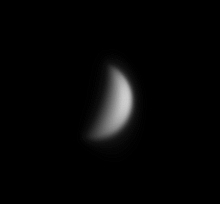
1833 MST: temporarily unmounted the iPhone and afocal adapter and switched to a 2" 30mm eyepiece (81X). Viewed the Moon. Then remounted the iPhone and took this image of the Moon, afocal 81X, NightCap Pro (1/250sec, ISO 25):
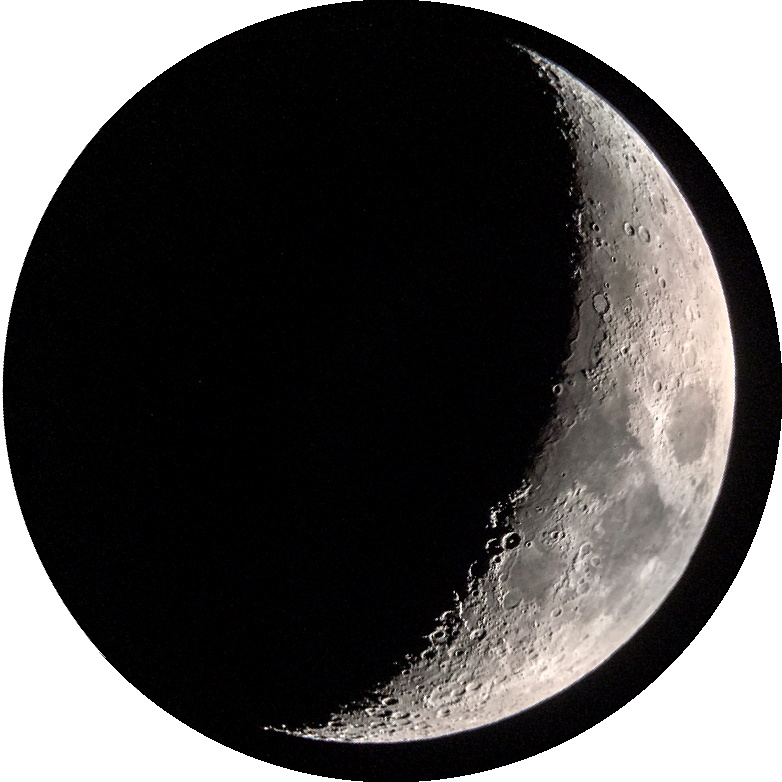
Removed the phone, switched to a 2" 9mm 100° eyepiece (271X) and did some lunar observing. There were some nice sights on the floor of the crater Posidonius. Also, the view of one of my favorite areas with the craters Theophilus (illuminated), Cyrillus (shadowed), and Catherina (shadowed) was good. Decided to image both areas. Mounted the iPhone on the eyepiece and took these images using NightCap Pro:
Crater Posidonius (top), 1/15sec, ISO 25
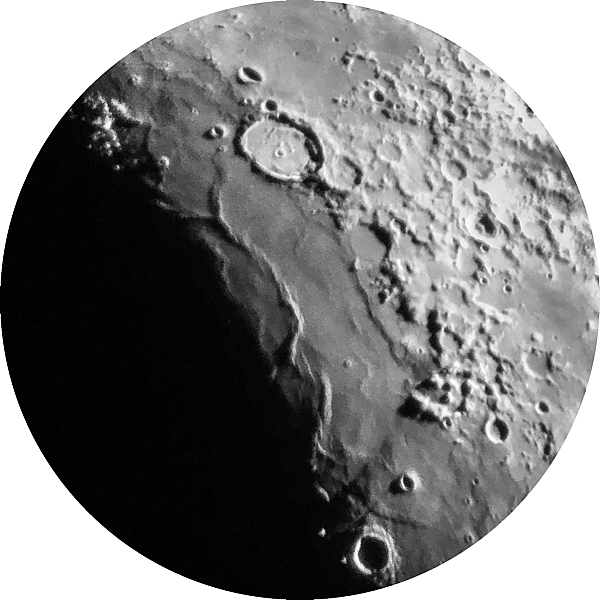
Craters Theophilus, Cyrillus, and Catherina, 1/300sec, ISO 250
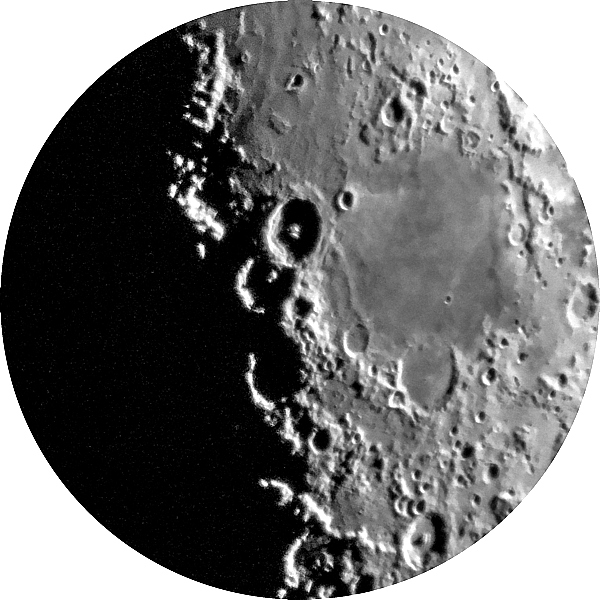
Next, I did some lunar observing, 102X.
Just prior to closing up for the night due to increasing clouds, I took some photos of the Moon with the planets Mars and Venus nearby in the western sky using the D7200 DSLR. This is a merge of two handheld photos, both at f/5, focal length 60mm, ISO 400; one at 1/10sec to capture the planets and the other at 1/400sec to avoid overexposing the Moon:
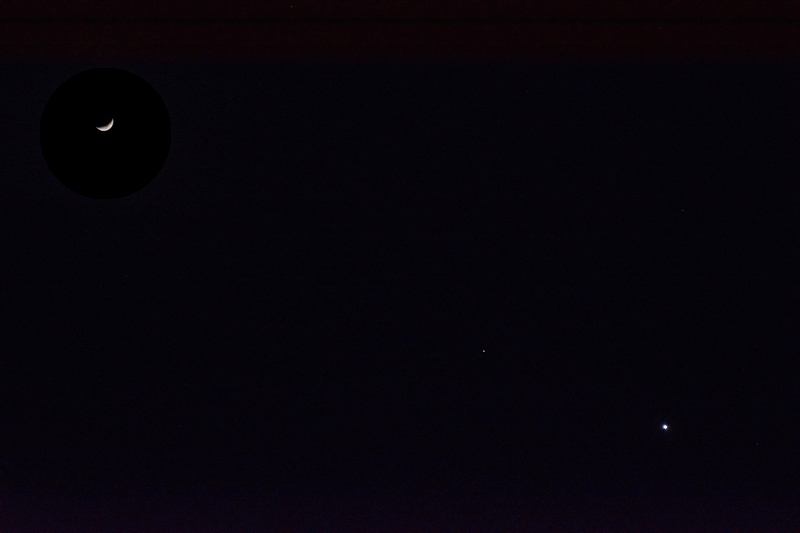
Mouseover or tap on image for labels
Then began closing up the observatory.
|
Close: Wednesday, 1 February 2017, 1915 MST Temperature: 61°F |
Session Length: 1h 03m Conditions: Partly cloudy |
Comments are welcome using Email. Twitter users can use the button below to tweet this report to your followers. Thanks.
Cassiopeia Observatory Home Page
Copyright ©2017 Michael L. Weasner / mweasner@me.com
URL = http://www.weasner.com/co/Reports/2017/02/02/index.html
